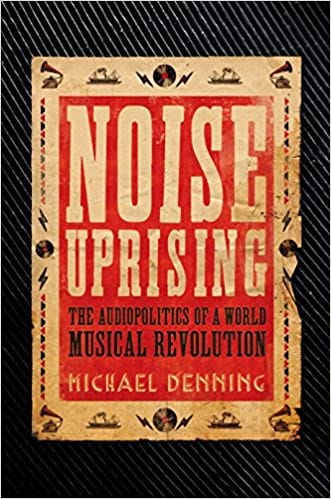Mark Rubin, who is responsible for a large part of my musical sensibilities, recently posted a video of Socalled laying down his theory of klezmer rhythm.
Socalled rails against straight “grid” rhythm and argues for a friction and syncopation to give the music life. It's good musical practice, and, Lord knows, I'm trying!
Scene: Twenty-five years ago, a leaky tent at some Old Time Fiddler’s Convention in the North Carolina mountains. Some alter kaker is talking my ear off about crooked tunes. What are crooked tunes? Songs that break the normal rhythmic rules, or more precisely, "deviate from the standard number of beats for that style of tune. That is, the tune may add or drop notes, disrupting the usual rhythm."
Like Socalled, this guy also likes the crooked tunes better.
Of course.
But why?
In 1987 ethnomusicologist Charles Keil proposed an answer. He wrote an article arguing that musical dissonances and discrepancies are not mistakes, but deliberate techniques to increase participation. Or as he says it:
The power of music is in its participatory discrepancies, and these are basically of two kinds: processual and textural. Music, to be personally involving and socially valuable, must be "out of time" and "out of tune."
Oddly, this quote mirrors an assertion made about Jewish music four hundred years ago. Paul Nettl, in the Story of Dance Music, cites complaints against Jewish musicians found in 17th-century police archives in Prague. Among the charges: “[they] keep neither time nor rhythm [and] introduce a number of false notes."
What is participation?
"Participation is the opposite of alienation from nature, from society, from the body, from labor" It is the "urge to merge" and results in a "oneness." Participation, as he explains, is a term borrowed from the early generations of anthropologists who saw in "primitive" people a different form of consciousness, one that they accessed in their rituals and performances.
Keil borrows the term but doesn’t spend much time on the grand, (and probably racist) claims. Don’t overthink it- Participation is the feeling of being grabbed by the music.
Grids, Rows, Lines
You might think the beat (Socalled's "grid") is causing us to tap our feet but if you listen closely it's not the beat but the simultaneous other beat being played or implied at the same time that is getting us moving. No one rocks out to a metronome. It's the friction that seduces us into leaning in. [Socalled calls this syncopation. I don't know. Technically I hear the ghost of a polyrhythm and I think there are important differences, but I've had various discussions with klezmer geniuses over the years who claim wildly different things about whether polyrhythms exist in this music. It’s probably neither- see afterword at bottom.]
“Who Doesn’t Like the Grid Plan?”
Joshua Horowitz, who is brilliant and equally fascinated by these discrepancies but always appropriately suspicious, suggests another reason for perhaps one of them. In acoustic settings, volume is hard to come by. Slight dissonances on the same note add to the musical bulk. In large orchestra settings, or amplified settings, these dissonances would be overwhelming, but in small groups, they are the musical equivalent of animals puffing themselves up to make them seem bigger. How the size of the orchestra, and its centralization, matters, we’ll have more to say later, but Josh’s observation cautions us to be careful and to always consider the practical.
It also requires musicians who aren't trained to hate dissonances. Participatory discrepancies are like hot sauce or fermented things- you might find them disgusting at first, but soon, you feel like a meal without them is not a meal at all, just food. Also, like fermentation, every culture kinda does it their own special way, and learning to enjoy your culture’s particular funk is part of being in that culture. But musical education, like a lot of literacy education, irons out and simplifies all the wonderful nook and crannies of oral culture and pumps out bland, shelf stable melodies. Michael Denning, in his great book, Noise Uprising, mentions that early recorded music caught a wonderful moment in musical history when the boom in port cities brought together literate educated musicians with recent less educated newcomers from the country to create a unique sound that was both intelligible to modern audiences but still had the vigor of these dissonances.
Today, 99% of the sensibilities of klezmer musicians come not from oral traditions or the old country, but from musicians coming out of western musical education. Burdened with the memory of god-knows-how-many whacks across the knuckles, they tremble before these dissonances, paralyzed with fear. But without these dissonances, the tunes are just notes. Musicians who are bored tend to get lost in melody- either developing ever more complex melodies or getting lost in archives, smothering their boredom with sheer volume. It’s like fast food, it only makes us want it more. But what would it mean to go in the other direction? To develop a technology of participation based on dissonances? (Something I go into in the ornament thread, forthcoming).
Afterword: Syncopation or polyrhythm? There’s a third option. In the contemporary Polish village folk scene, they developed an electronic buben or drum that duplicates folk rhythms. They built in a dissonance dial that affects neither syncopation or polyrhythm, but a sort of tempo rubato or wandering beat. See my future post on Phrasing and Sacrifice.







